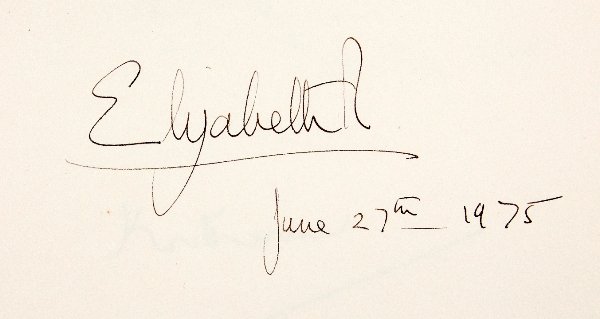Last month I introduced this blog series, Monarchy in the Archives, by reflecting on ways monarchy has left its mark on the Shakespeare Birthplace collections. We looked at the use of regnal years in dating early documents, which can mean even the most mundane legal transaction may be brought into the context of royal power struggles! This time, though, I wanted to highlight some documents where monarchs have (quite literally) left their mark in the archive - royal signatures.
As an archivist, I’m often aware of the power of handwriting, and signatures in particular. The written word can add to our understanding of text – a cursive or laborious hand communicates something different about the mind and context of the writer. It can also prove emotive in that a handwritten document provides a connection from reader to author, and to a moment in time when the writer took up a pen (or quill) and formed letters on a page. In this way, signatures can have a power and excitement about them.
The Birthplace Trust is lucky enough to hold a signature of Queen Elizabeth I. Here we see her signing off a warrant (authorising the issue of a tabard to a newly appointed herald) on 24th January 1592. This year, incidentally, also marks the end of William Shakespeare’s “lost years”, the year Robert Greene branded him an “upstart crow”!

Elizabeth’s signature is large (several inches across) and ornate. Its grandiosity is certainly in keeping with her royal status. It has been suggested the flourishes might be a method to make the signature more difficult to forge, but I wonder if it is more an indication of her wealth and authority. What do you think? Fast-forward 383 years, to July 1964, and we find a conspicuously similar signature.

This Elizabeth R is our very own HM Queen Elizabeth II, made just over two decades into her 60 year (and counting) reign. The size and style of each signature certainly resonate with each other, and the use of the R. abbreviation (meaning Regina) is pretty potent in itself. However, the signature of our current Queen is perhaps more low key, which might reflect changes in the relationship of monarchy and state, or simply changes in writing technology and style (from quills to biro!).
What do you think about these signatures? Seeing them together makes me think of the importance of continuity for the monarchy - even if the reality of royal accession is actually a bit more complicated. Saying that, I don’t think anyone can look at these and not be impressed by the durability of the institution and be drawn into the two eras the signatures connect us to. These marks on page transport us from a visit by our own monarch to the birthplace of William Shakespeare, and then back hundreds of years to the reign of another Queen Elizabeth in the very year Shakespeare was just starting to make his own mark, on the world of theatre!
For those of you local to Stratford, if you’d like to find out more about Shakespeare’s royal connections, then I would recommend an exhibition of that name, currently on display in the Shakespeare Birthplace until the end of June 2012.
